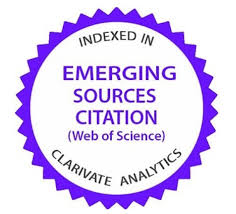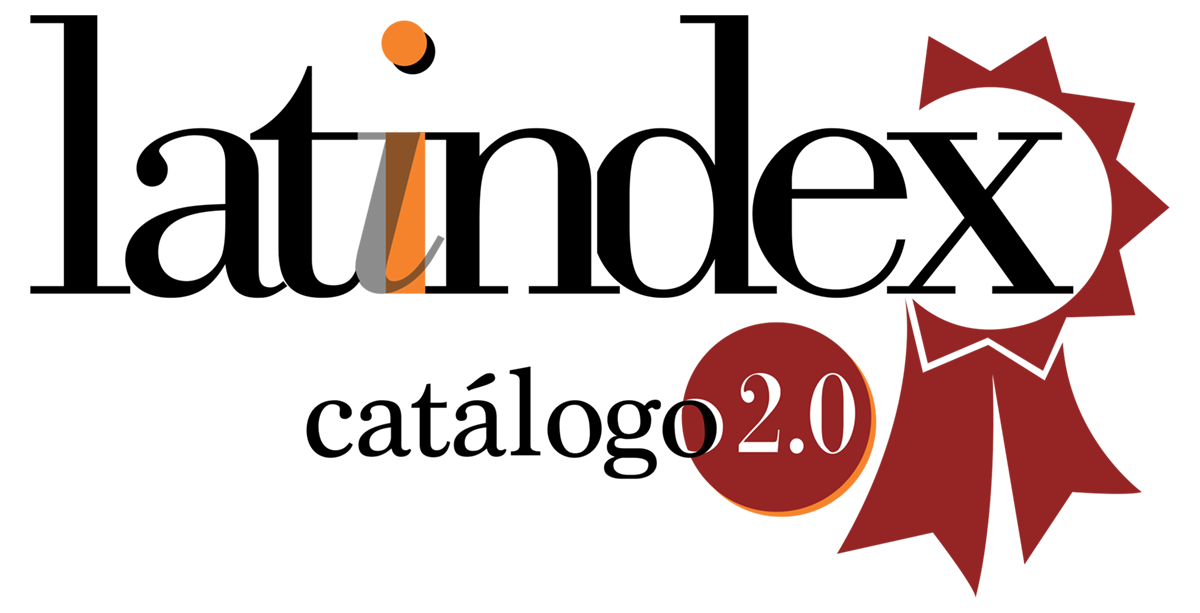The Fight against the Least Visible Form of Human Trafficking
Trafficking for Child Labour Exploitation
DOI:
https://doi.org/10.35295/osls.iisl/0000-0000-0000-0926Palabras clave:
trabajo infantil forzado, trabajo realizado por niños, trabajo infantil, trata infantil con fines de explotación laboralResumen
La trata infantil con fines de explotación laboral es un fenómeno difícil de detectar, y tampoco es sencillo definirlo si se tiene en cuenta que esta forma específica de trata está estrechamente relacionada con el fenómeno del trabajo forzado infantil e, incluso, con el fenómeno más general de trabajo infantil. Todo ello supone un desafío a la hora de regular las circunstancias que definen el trabajo realizado por niños y la criminalización de la trata para la explotación laboral. Este artículo ofrece un repaso de los datos disponibles en esta materia y procura aclarar las situaciones que se pueden plantear, así como definir trabajo realizado por niños, trabajo infantil, trabajo infantil forzado y trata infantil con fines de explotación laboral. Por último, profundiza en las posibles deficiencias y en los aspectos críticos que podrían obstaculizar un acercamiento global a esta problemática.
Descargas
Metrics
Estadísticas globales ℹ️
|
813
Visualizaciones
|
420
Descargas
|
|
1233
Total
|
|
Citas
Aboso, G.E., 2013. Trata de personas. La criminalidad organizada en la explotación laboral y sexual. Buenos Aires: B de F.
Aghazarm, C., et al., 2008. Human Trafficking: New Directions for Research [online]. Geneva: International Organization for Migration. Available from: http://www.iom.int/jahia/webdav/shared/shared/mainsite/microsites/IDM/workshops/ensuring_protection_070909/human_trafficking_new_directions_for_research.pdf [Accessed 15 December 2017].
Arias Robles, M., 1998. Adultos a la fuerza. La explotación laboral de la infancia. Barcelona: Intermón / Octaedro.
Bonet Pérez, J., 2010. Explotación laboral infantil. In: F. Aldecoa Luzárraga and J.J. Forner Delaygua, eds. La protección de los niños en el Derecho internacional y en las relaciones internacionales. Madrid: Marcial Pons, pp. 215-238. DOI: https://doi.org/10.2307/j.ctv10qr135.12
Chuang, J.A., 2014. Exploitation creep and the unmaking of human trafficking law. The American Journal of International Law, 108 (4), 609-649. DOI: https://doi.org/10.5305/amerjintelaw.108.4.0609
Cordero Arce, M., 2015. El derecho de las niñas y niños al trabajo: un derecho secuestrado por el adultismo y capitalismo hegemónicos. Anales de la cátedra Francisco Suárez, 49, 87-127. DOI: https://doi.org/10.30827/acfs.v49i0.3279
Coster van Voorhout, J.E.B., 2007. Human trafficking for labour exploitation: interpreting the crime. Utrecht Law Review [online], 3 (2), 44-69. Available from: https://www.utrechtlawreview.org/articles/10.18352/ulr.47/galley/47/download/ [Accessed 14 December 2017]. DOI: https://doi.org/10.18352/ulr.47
Defensor del Pueblo, 2012. La trata de seres humanos en España: víctimas invisibles. Informes, estudios y documentos [online], 30. Madrid: Defensor del Pueblo. Available from: https://www.defensordelpueblo.es/wp-content/uploads/2015/05/2012-09-Trata-de-seres-humanos-en-Espa%C3%B1a-v%C3%ADctimas-invisibles-ESP.pdf [Accessed 19 December 2017].
Diallo, Y., Etienne, A., and Mehran, F., 2013. Global child labour trends 2008 to 2012 [online]. Geneva: International Programme on the Elimination of Child Labour of the International Labour Organization (IPEC), 30 September. Available from: http://www.ilo.org/ipecinfo/product/download.do?type=document&id=23015 [Accessed 14 December 2017].
Eurostat, 2013. Trafficking in human beings. 2013 edition [online]. Eurostat Methodologies and Working Papers. Luxembourg: European Commission, Eurostat. Available from: https://ec.europa.eu/anti-trafficking/sites/antitrafficking/files/trafficking_in_human_beings_-_dghome-eurostat_en_1.pdf [Accessed 15 December 2017].
Fabregat, G,. and Virrueta, K., 2000. El trabajo y la explotación infantil. Alzira: Germania.
Fyfe, A., 2009. El movimiento mundial contra el trabajo infantil. Avances y dirección futura. Trans.: M. Cabarcos Traseira. Originally published by the International Labour Organization. Madrid: Gobierno de España, Ministerio de Trabajo e Inmigración. Colección Informes OIT, nº 84.
Gallagher, A.T., 2010. The international Law of human trafficking. New York: Cambridge University Press. DOI: https://doi.org/10.1017/CBO9780511761065
García Vázquez, S., 2012. La lucha contra la trata de seres humanos a nivel internacional, comunitario y nacional. In: S. García Vázquez and P. Fernández Olalla, La trata de seres humanos. Madrid: Centro de estudios políticos y constitucionales, 15-97.
Gibbons, E.D., Huebler, F., and Loaiza, E., 2005. Child labour, education and the principle of non-discrimination [online]. Working paper. New York: UNICEF, Division of Policy and Planning. November. Available from: https://www.unicef.org/Child_Labour_Education_and_the_Principle_Of_Non-Discrimination.pdf [Accessed 14 December 2017]. DOI: https://doi.org/10.1093/acprof:oso/9780199284627.003.0010
Goodey, J., 2012. Data on human trafficking: challenges and policy context. In: J. Winterdyk, B. Perrin and P. Reichel, eds., Human trafficking. Exploring the international nature, concerns, and complexities. Boca Raton, FL: Taylor & Francis Group, pp. 39-56.
International Labour Office and Inter-Parliamentary Union, 2002. Eliminating the worst Forms of Child Labour. A practical guide to ILO Convention No. 182. Handbook for Parliamentarians No. 3-2002 [online]. Geneva: ILO / IPU. Available from: http://archive.ipu.org/PDF/publications/childlabour_en.pdf [Accessed 15 December 2017].
International Labour Organization, 1930. Convention concerning Forced or Compulsory Labour, no. 29 [referred to as Forced Labour Convention] (online). Geneva: 14th ILC session, 28 June. Available from: http://www.ilo.org/dyn/normlex/en/f?p=1000:12100:0::NO::P12100_ILO_CODE:C029 [Accessed 15 December 2017].
International Labour Organization, 1973. Convention concerning Minimum Age for Admission to Employment, no. 138 [referred to as Minimum Age Convention] (online). Geneva: 58th ILC session, 26 June. Available from: http://www.ilo.org/dyn/normlex/en/f?p=NORMLEXPUB:12100:0::NO::P12100_ILO_CODE:C138 [Accessed 15 December 2017].
International Labour Organization, 1999. Convention concerning the Prohibition and Immediate Action for the Elimination of the Worst Forms of Child Labour, no. 182 [referred to as Worst Forms of Child Labour Convention] (online). Geneva: 87th ILC session, 17 June. Available from: http://www.ilo.org/dyn/normlex/en/f?p=NORMLEXPUB:12100:0::NO::P12100_ILO_CODE:C182 [Accessed 15 December 2017].
International Labour Organization, 2002. A future without child labour. Global report under the follow-up to the ILO Declaration on Fundamental Principles and Rights at Work. Report of the Director-General [online]. Geneva: ILO. Available from: http://www.ilo.org/wcmsp5/groups/public/---dgreports/---dcomm/---publ/documents/publication/wcms_publ_9221124169_en.pdf [Accessed 14 December 2017].
International Labour Organization, 2005. Human trafficking and forced labour exploitation - guidance for legislation and law enforcement. Report. Geneva: ILO, 1 January.
International Labour Organization, 2006. The end of child labour – Within reach. ILO Global report on child labour [online]. Geneva: ILO. Available from: http://www.ilo.org/public/english/standards/relm/ilc/ilc95/pdf/rep-i-b.pdf [Accessed 15 December 2017].
International Labour Organization, 2008. Child labour statistics. Report III [online]. Meeting document for the 18th International Conference of Labour Statisticians, Geneva, 24 November-5 December. Geneva: ILO. Available from: http://www.ilo.org/wcmsp5/groups/public/---dgreports/---stat/documents/meetingdocument/wcms_099577.pdf [Accessed 15 December 2017].
International Labour Organization, 2010. Accelerating action against child labour. Global report under the follow-up to the ILO Declaration on fundamental principles and rights at work [online]. Geneva: ILO. Available from: http://www.ilo.org/wcmsp5/groups/public/@dgreports/@dcomm/documents/publication/wcms_126752.pdf [Accessed 14 December 2017].
International Labour Organization, 2012a. Hard to see, harder to count. Survey guidelines to estimate forced labour of adults and children [online]. Geneva: ILO, 1 June. Available from: http://ilo.org/wcmsp5/groups/public/---ed_norm/---declaration/documents/publication/wcms_182096.pdf [Accessed 15 December 2017].
International Labour Organization, 2012b. ILO Global Estimate of Forced Labour. Results and methodology [online]. Available from: http://www.ilo.org/wcmsp5/groups/public/---ed_norm/---declaration/documents/publication/wcms_182004.pdf [Accessed 14 December 2017].
International Labour Organization, 2013. World Report on Child Labour. Economic vulnerability, social protection and the fight against child labour [online]. Geneva: ILO. Available from: https://www.ilo.org/ipec/Informationresources/WCMS_178184/lang--en/index.htm [Accessed 15 December 2017].
International Labour Organization, 2014. Protocol of 2014 to the Forced Labour Convention, 1930, P029 [referred to as Forced Labour Convention] (online). Geneva: 103rd ILC Session, 11 June. Available from: http://www.ilo.org/dyn/normlex/en/f?p=NORMLEXPUB:12100:0::NO::P12100_ILO_CODE:P029 [Accessed 15 December 2017].
International Programme on the Elimination of Child Labour and International Organisation of Employers, 2015. ILO-IOE Child Labour Guidance Tool for Business. How to Do Business with Respect for Children's Right to be Free from Child Labour [online]. Geneva: ILO. Available from: http://files.m17.mailplus.nl/user317000154/76798/ILO-IOE-child-labour-guidance.pdf [Accessed 15 December 2017].
International Programme on the Elimination of Child Labour of the International Labour Organization, 2002. Every Child Counts. New global estimates on Child Labour [online]. Geneva: ILO. April. Available from: http://www.ilo.org/ipecinfo/product/download.do?type=document&id=742 [Accessed 15 December 2017].
International Programme on the Elimination of Child Labour of the International Labour Organization, 2007. Child labour: cause and effect of the perpetuation of poverty [online]. San José: ILO. December. Available from: https://www.ilo.org/ipec/Informationresources/WCMS_IPEC_PUB_11354/lang--en/index.htm [Accessed 15 December 2017].
International Programme on the Elimination of Child Labour of the International Labour Organization, 2008. Combating trafficking in children for labour exploitation. A resource kit for policy-makers and practitioners [online]. Geneva: ILO. Available from: https://www.ilo.org/ipec/Informationresources/WCMS_100710/lang--en/index.htm [Accessed 15 December 2017].
International Programme on the Elimination of Child Labour of the International Labour Organization, 2013. Marking progress against child labour. Global estimates and trends 2000-2012 [online]. Geneva: ILO. Available from: http://www.ilo.org/wcmsp5/groups/public/---ed_norm/---ipec/documents/publication/wcms_221513.pdf [Accessed 14 December 2017].
International Programme on the Elimination of Child Labour of the International Labour Organization, 2015. World Report on Child Labour 2015: Paving the way to decent work for young people [online]. Geneva: ILO, 10 June. Available from: http://www.ilo.org/ipecinfo/product/download.do?type=document&id=26977 [Accessed 14 December 2017].
Kane, J., 2013. Making money out of misery. Trafficking for labour exploitation. In: M.C. Burke, ed., Human trafficking. Interdisciplinary perspectives. New York: Routledge, pp. 109-132.
Kaye, J., and Winterdyk, J., 2012. Explaining human trafficking. In: J. Winterdyk, B. Perrin and P. Reichel, eds., Human trafficking. Exploring the international nature, concerns, and complexities. Boca Raton, FL: Taylor & Francis Group, pp. 57-78. DOI: https://doi.org/10.1201/b11555
Mendizábal, G., 2011. Regulaciones del trabajo infantil. Inventio, la génesis de la cultura universitaria en Morelos, 13, 37-43.
Nelken, D., 2010. Human trafficking and legal culture. Israel Law Review, 43, 479-513. DOI: https://doi.org/10.1017/S0021223700000868
Nieuwenhuys, O., 1996. The paradox of child labour and anthropology. Annual Review of Anthropology [online], 25, 237-251. Available from: https://doi.org/10.1146/annurev.anthro.25.1.237 [Accessed 11 December 2017]. DOI: https://doi.org/10.1146/annurev.anthro.25.1.237
Nieuwenhuys, O., 2007. Embedding the global womb: global child labour and the new policy agenda. Children’s Geographies, 5 (1-2), 149-163. DOI: https://doi.org/10.1080/14733280601108312
Olsen, H.H., 2008. The snake from Fujian Province to Morecambe Bay: an analysis of the problem of human trafficking in sweated labour. European Journal of Crime, Criminal Law and Criminal Justice, 16, 1-37. DOI: https://doi.org/10.1163/092895608X272561
Palmiotto, M.J., 2015. Forced labour in the United States. In: M.J. Palmiotto, ed., Combating human trafficking. A multidisciplinary approach. Boca Raton, FL: CRC Press / Taylor & Francis Group, pp. 157-174. DOI: https://doi.org/10.1201/b17709
Rijken, C., 2013. Trafficking in human beings for labour exploitation: cooperation in an integrated approach. European Journal of Crime, Criminal Law and Criminal Justice, 21 (1), 9-35. DOI: https://doi.org/10.1163/15718174-20180002
Rodillo Cordero, F.J., 2004. Explotación laboral infantil. In: J.A. de Elena y Peña, ed., Desigualdad social y relaciones de trabajo. Universidad de Salamanca, pp. 65-80.
Rodríguez Montañés, T., 2015. Trata de seres humanos y explotación laboral. Reflexiones sobre la realidad práctica. In: R. Alcácer Guirao, M. Martín Lorenzo and M. Valle Mariscal de Gante, eds., La trata de seres humanos: persecución penal y protección de las víctimas. Madrid: Edisofer, pp. 57-82.
Ruiz Rodrigo, C., 2013. La fábrica o la escuela. Trabajo infantil y educación protectora en la España de los siglos XIX y XX. Madrid: Dykinson.
Sánchez Tomás, J.M., 2015. Prólogo. ¿Por qué le llaman trata cuando quieren decir explotación? In: R. Alcácer Guirao, M. Martín Lorenzo and M. Valle Mariscal de Gante, ed., La trata de seres humanos: persecución penal y protección de las víctimas. Madrid: Edisofer, pp. 13-18.
Sanghera, J., 2005. Unpacking the trafficking discourse. In: K. Kempadoo, J. Sanghera and B. Pattanaik, eds., Trafficking and prostitution reconsidered. New perspectives on migration, sex work, and human rights. Boulder, CO: Paradigm, pp. 3-24. DOI: https://doi.org/10.4324/9781315084664-1
Sarasúa, C., 2013. ¿Activos desde cuándo? La edad de acceso al mercado de trabajo en la España del siglo XVIII. In: J.M. Borrás Llop, ed,. El trabajo infantil en España (1700-1950). Barcelona: Icaria / Universitat de Barcelona, pp. 63-90.
Shahriari, S., 2013. Children in Bolivia fight for their right to work. DW [online], 12 April. Available from: http://p.dw.com/p/18Ehh [Accessed 2 January 2018].
Stearman, K., 2011. Trabajo infantil. Translated by M.L. Agra Pardiñas. Madrid: Morata.
Tabatabai, H., 2006. Eliminating child labour: The promise of conditional cash transfers [online]. Working paper. Geneva: International Programme for the Elimination of Child Labour of the International Labour Organization, 1 October. Available from: http://www.ilo.org/ipecinfo/product/download.do?type=document&id=3804 [Accessed 15 December 2017].
UNICEF and International Labour Organization, 2004. Addressing child labour in the Bangladesh garment industry 1995-2001. A synthesis of UNICEF and ILO evaluation studies of the Bangladesh garment sector projects [online]. New York: UNICEF. Geneva: ILO. August. Available from: http://www.ilo.org/ipecinfo/product/download.do?type=document&id=556 [Accessed 15 December 2017].
United Nations et al., 2009. System of National Accounts 2008. Sales No. E.08.XVII.29 [online]. New York. Available from: https://unstats.un.org/unsd/nationalaccount/docs/sna2008.pdf [Accessed 15 December 2017].
United Nations Office on Drugs and Crime, 2008. Supply Management, Eliminating the Risks of Forced Labour and Trafficking [online]. Background paper. Vienna: United Nations Global Initiative to Fight Human Trafficking. The Vienna Forum to Fight Human Trafficking, 13-15 February, 010 Workshop. Available from: https://www.unodc.org/documents/human-trafficking/2008/BP010SupplyManagementILO.pdf [Accessed 19 December 2017].
United Nations Office on Drugs and Crime, 2009. Global Report on Trafficking in Persons 2009 [online]. Vienna: UNODC. Available from: http://www.unodc.org/documents/human-trafficking/Global_Report_on_TIP.pdf [Accessed 14 December 2017].
United Nations Office on Drugs and Crime, 2012. Global Report on Trafficking in Persons 2012. (Sales No. E.13.IV.1) [online]. Vienna: UNODC. Available from: http://www.unodc.org/documents/data-and-analysis/glotip/Trafficking_in_Persons_2012_web.pdf [Accessed 14 December 2017].
United Nations Office on Drugs and Crime, 2014. Global Report on Trafficking in Persons 2014. (Sales No. E.14.V.10) [online]. Vienna: UNODC. Available from: http://www.unodc.org/documents/data-and-analysis/glotip/GLOTIP_2014_full_report.pdf [Accessed 14 December 2017].
Villacampa Estiarte, C., 2011. El delito de trata de seres humanos. Una incriminación dictada desde el Derecho internacional. Cizur Menor: Aranzadi.
Viñao Frago, A., 2005. Tiempos familiares, tiempos escolares. (Trabajo infantil y asistencia escolar en España durante la segunda mitad del siglo XIX y el primer tercio del XX). História da educaçao, 17, 33-50.
Wade, M., 2012. Prosecution of trafficking in human beings cases. In: J. Winterdyk, B. Perrin and P. Reichel, eds., Human trafficking. Exploring the international nature, concerns, and complexities. Boca Raton, FL: Taylor & Francis Group, pp. 153-180.
Wintersberger, H., 2006. Infancia y ciudadanía: el orden generacional del Estado de bienestar. Trans.: Mercedes Navarro and Lourdes Gaitán. Política y sociedad, 43 (1), 81-103.
Descargas
Publicado
Cómo citar
Número
Sección
Licencia
Derechos de autor 2018 Luz María Puente Aba

Esta obra está bajo una licencia internacional Creative Commons Atribución-NoComercial-SinDerivadas 4.0.
Los autores conservan el copyright de sus trabajos, que se publicarán en OSLS bajo una licencia Creative Commons Reconocimiento NoComercial SinObraDerivada. Puede consultar más detalles en: http://es.creativecommons.org/licencia/. Si no está de acuerdo con esta licencia, por favor, póngase en contacto con nosotros.
El autor concede los permisos necesarios para difundir la información bibliográfica del artículo, incluyendo el resumen, y autorizar a otros, incluyendo las bases de datos bibliográficas, de índices y servicios de alerta de contenidos, a copiar y comunicar esta información.
Para más información sobre los permisos para distribuir su artículo en cada fase de la producción, por favor, lea nuestra Política de Autoarchivo y Divulgación (en inglés).
Las condiciones de copyright con el nombre de autores y co-autores, y la licencia Creative Commons se mostrarán en el artículo. Estas condiciones se deben aceptar como parte del proceso de envío de un artículo a la revista. Por favor, asegúrese de que todos los co-autores se mencionan correctamente, y que entienden y aceptan estos términos.





















